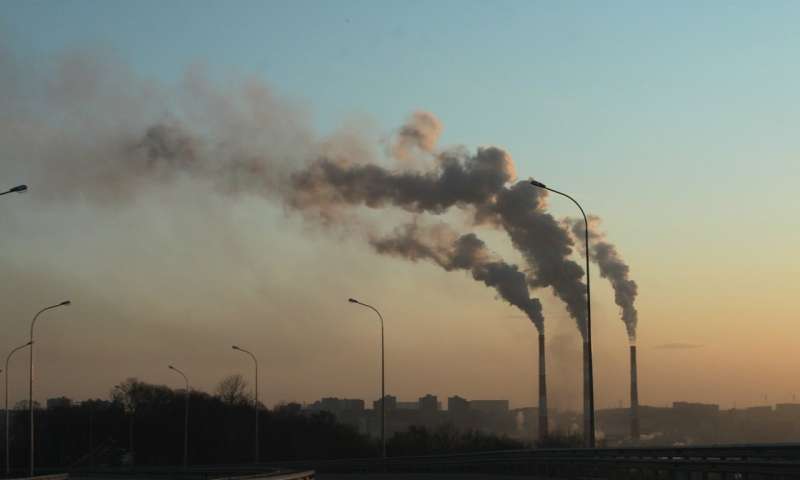The possibility of a carbon emissions peak in China by 2030 depends on the GDP growth rate

Extant studies have noted that China's ability to peak carbon emissions by 2030 has something to do with the economic growth rate and suggested a slowdown in economic growth in China to help peak carbon emissions. However, none of them gives a quantitative account for such a relationship.
New research by Professor Weidong Liu, Associate Professors Zhipeng Tang and Mengyao Han, and Dr. Wanbei Jiang from the Institute of Geographical Sciences and Natural Resources Research, Chinese Academy of Sciences explores this connection.
In a paper published in Science China Earth Sciences, Professor Liu's team translates the question from "when will China's carbon emissions peak occur?" into "how can one control the rate of decrease of carbon intensity at a given GDP growth rate?"
They use a random forest algorithm method to identify and project the key drivers of changes of carbon intensity in China, and then develop a mathematical model to simulate different scenarios relating to the decreases of carbon intensity. By comparing the decrease rate of carbon intensity and the GDP growth rate, one can easily find a date at which China's carbon emissions will peak.
The research finds that if the GDP growth rate were 5.0% in 2026-2030, and if the share of non-fossil energy in total energy consumption were 23.0% or above, the peak will occur before 2030. However, if the share of non-fossil fuels were 20.0% or less, there would be uncertainty of realizing the peak target, which means an acceleration in the pace of restructuring towards non-fossil energy would be required.
The projected peak emissions scenarios suggest that the peak will occur in 2025-2029, with average peak emissions of 11.2 billion tons and a distribution ranging from a minimum of 10.5 billion and a maximum of 11.9 billion tons. If the GDP growth rate were 4.5%, 5.5% or 6.0% in 2026-2030, the share of non-fossil energy must reach 23.0%, 25.0% or 27.0%, respectively, to ensure that the peak occurs by 2030.
The research also shows that unlike the major developed countries where carbon emissions peak was achieved by offshoring of manufacturing and energy restructuring, China must take developing non-fossil energy as the major pathway to achieve its own carbon emission peak as a result of its pursuit of being a "world factory."
More information: Weidong Liu et al, Pathways to peak carbon emissions in China by 2030: An analysis in relation to the economic growth rate, Science China Earth Sciences (2022). DOI: 10.1007/s11430-021-9901-y
Journal information: Science China Earth Sciences
Provided by Science China Press

















